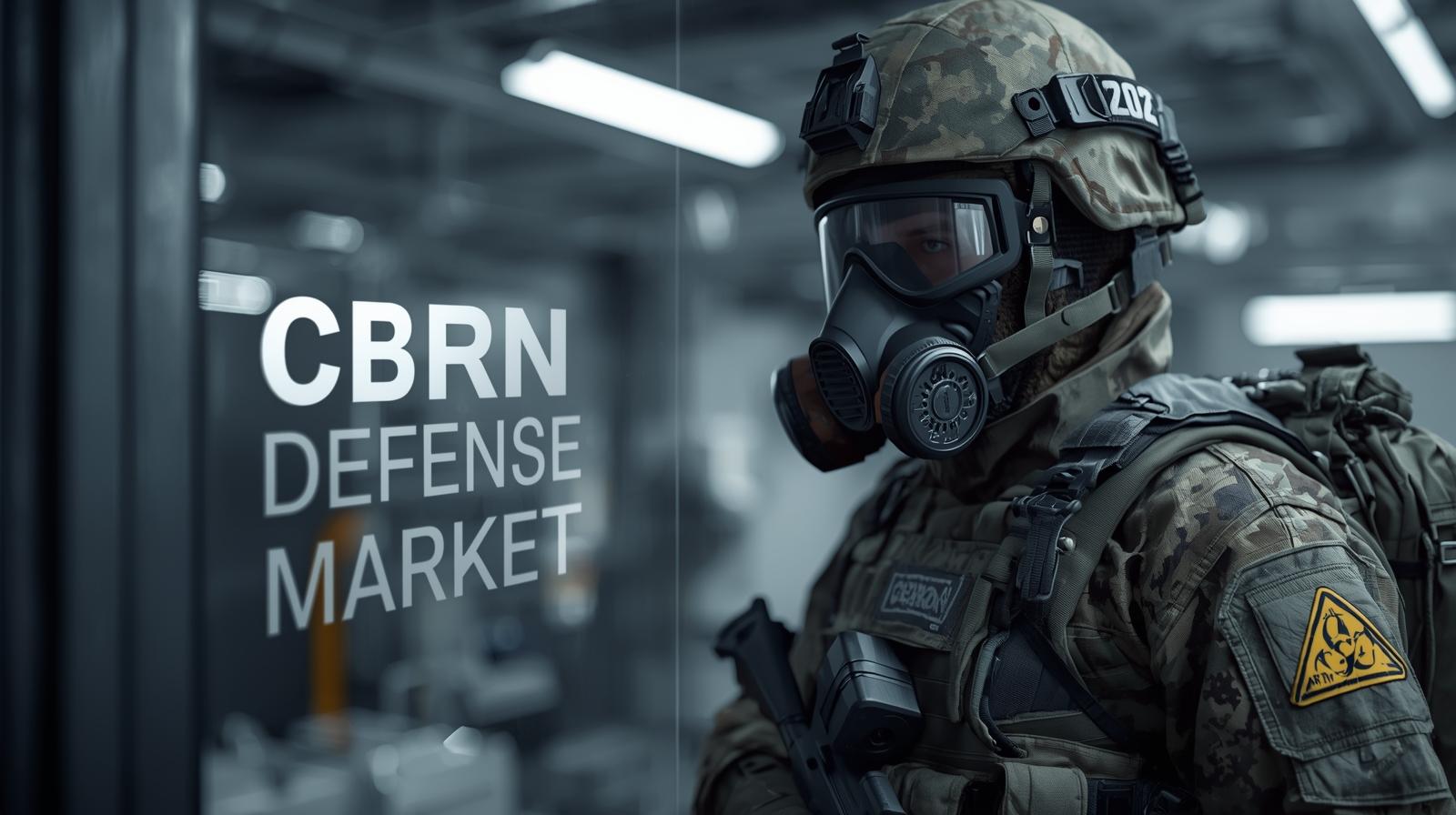The CBRN Defense Market is becoming increasingly critical as nations face rising threats from chemical, biological, radiological, nuclear, and explosive (CBRNE) hazards. According to the latest MarketsandMarkets™ report, the CBRN Defense Industry is valued at USD 16.1 billion in 2023 and is projected to grow to USD 21.4 billion by 2028, registering a CAGR of 5.8%.

Modern CBRN defense solutions play a central role in national security, military preparedness, emergency response, and crisis management. These systems enable governments, defense forces, and first responders to detect, identify, protect against, and mitigate threats arising from hazardous materials or intentional attacks. With increasing geopolitical tensions and a growing emphasis on homeland security, the demand for advanced CBRN defense systems continues to rise across global markets.
Download PDF Brochure @ https://www.marketsandmarkets.com/pdfdownloadNew.asp?id=112383226
Growing Importance of CBRN Defense
CBRN threats pose severe risks to civilian populations, military personnel, critical infrastructure, and public safety. The growing use of hazardous materials, terrorism-related incidents, industrial accidents, and biological threats has made CBRN readiness essential.
Key components of CBRN defense include:
-
Detection and monitoring systems for real-time chemical, biological, radiological, and nuclear identification
-
Protective wearables to safeguard frontline responders and military personnel
-
Respiratory systems, ensuring safe breathing in contaminated environments
-
Decontamination units, minimizing exposure and environmental spread
-
Simulators and training systems for realistic scenario-based preparedness
As advanced technologies such as IoT, AI, VR, and AR enter the defense landscape, modern CBRN tools are becoming more accurate, responsive, and effective.
Market Drivers Behind the Growth
1. Rising Global Security Challenges
Increased geopolitical conflicts, terrorism risks, and chemical warfare threats are driving governments to invest more heavily in CBRN preparedness.
2. Modernization of Military and Emergency Response Forces
Nations are updating their military capabilities and equipping first responders with advanced CBRN systems for real-time threat response.
3. Adoption of Digital and Smart Technologies
The use of connected sensors, advanced analytics, virtual simulations, and automated detection is revolutionizing the effectiveness of CBRN equipment.
4. Increased Government Spending
Growing defense and security budgets in Asia Pacific, North America, and Europe are contributing significantly to market expansion.
Segmentation Overview
By Type: Chemical Segment Leads
The chemical segment holds the largest share of the market in 2023. Rising concerns surrounding chemical warfare, toxic spills, industrial accidents, and hazardous materials handling are fueling demand for:
-
Portable chemical detectors
-
Laboratory identification systems
-
Advanced protective gear including hazmat suits and gas masks
The surge in global chemical threats has made chemical defense equipment a high-priority investment.
By Equipment: Protective Wearables Dominate
Protective wearables are expected to be the largest segment through 2028. This category includes:
-
Protective clothing
-
Integrated gas masks and respiratory hoods
-
CBRN escape devices
-
Contamination-resistant gloves, footwear, and suits
Both civilian responders and military units rely on protective wearables for personal safety in high-risk environments. The availability of fully integrated Mopp-4 suits offering high-level protection contributes to strong demand.
By End Use: Defense and Government Segment Holds the Largest Share
The defense and government sector is the primary user of advanced CBRN defense equipment. It includes military CBRN teams, homeland security forces, police departments, fire safety units, and hazmat response teams.
Asia Pacific is projected to witness the highest CAGR in this segment due to rising threat perception, increased funding, and military modernization in countries like India, China, South Korea, and Australia.
Regional Analysis
Asia Pacific: Largest Market from 2023 to 2028
Asia Pacific is forecasted to lead the CBRN Defense Industry due to:
-
Rise in terror attacks and cross-border threats
-
Increased defense budgets, especially in India and China
-
Expansion of special CBRN military units in emerging economies
-
Investments in advanced detection, protective wearables, and decontamination systems
Growing national security concerns across the region make CBRN defense a top strategic priority.
Competitive Landscape
Key players shaping the CBRN Defense Market include:
-
Rheinmetall Defence (Germany)
-
Thales Group (France)
-
Smiths Group PLC (UK)
-
Teledyne FLIR LLC (US)
-
Bruker Corporation (US)
Strategic actions such as new product launches, government contracts, partnerships, and establishment of specialized R&D centers enable these companies to maintain leadership in the global market. Their continuous innovation supports the deployment of next-generation CBRN detection systems, wearable protection, and advanced simulation technologies.
Future Outlook
The future of CBRN defense will be defined by:
-
AI-enabled detection for faster and more accurate threat identification
-
Wearable biometric systems for real-time monitoring of responder health
-
Smart decontamination units integrated with robotics
-
Enhanced simulation-based training using virtual and augmented reality
-
Network-centric CBRN systems leveraging IoT for integrated situational awareness
As nations continue investing in preparedness and resilience, the CBRN Defense Industry is expected to remain vital for global security.
Ask for Sample Report @ https://www.marketsandmarkets.com/requestsampleNew.asp?id=112383226
The CBRN Defense Market, expected to reach USD 21.4 billion by 2028, is a rapidly advancing sector driven by rising threats, technological innovation, and global security priorities. With significant demand from defense forces, government agencies, and emergency responders, the industry is positioned for long-term growth.
